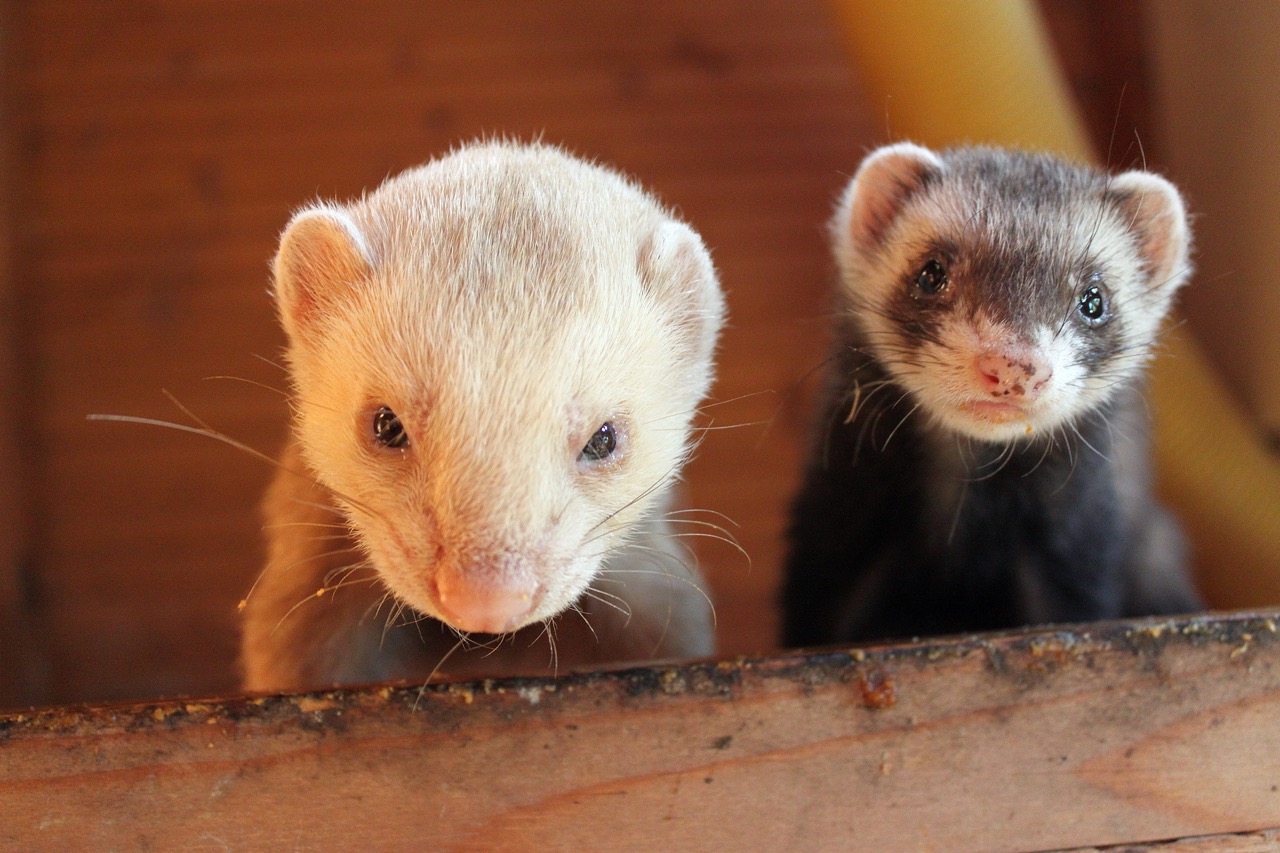Creating a comfortable and engaging habitat for your ferret is essential to its health and happiness. Ferrets are energetic, curious creatures that require an environment where they can explore, play, and rest. One of the key components of a successful ferret habitat is the cage and its accessories. Understanding what accessories to include, the features to prioritize in a cage, the importance of safe toys, and how to maintain hygiene will help you craft a nurturing space for your furry friend. This article provides an in-depth look at these critical elements to ensure your ferret thrives.
Essential Accessories for a Comfortable Ferret Habitat
When setting up a cage for your ferret, it’s important to include a variety of essential accessories that promote comfort and well-being. One of the most important items is a cozy sleeping area. This can be achieved with a hammock, soft bedding, or a ferret-specific den. Ferrets love to snuggle and will appreciate a warm, secure spot to rest after a day of play.
Additionally, providing multiple levels within the cage can enhance your ferret’s habitat. Multi-level cages with ramps allow ferrets to climb and explore, which is crucial for their physical health. Platforms and shelves can also be added to create a stimulating environment that encourages exercise and interaction. Be sure to secure these levels properly to prevent any accidents during playtime.
Lastly, litter boxes are a must-have accessory for maintaining cleanliness in your ferret’s living space. Ferrets are relatively clean animals, and they can be trained to use a litter box. Placing a litter box in a designated area of the cage will help manage waste, making it easier to keep the habitat clean and odor-free. Use a safe, non-toxic litter material to ensure your ferret’s safety while maintaining hygiene.
Key Features to Look for in Ferret Cages
When selecting a cage for your ferret, you should consider several key features that directly affect your pet’s well-being. Firstly, the size of the cage is paramount. Ferrets are active animals that require ample space to roam. A cage that is at least 2 feet wide, 2 feet deep, and 4 feet tall is recommended. The larger the cage, the better, as it allows for a more enriching environment with room for accessories and activities.
Ventilation is another crucial feature to look for in a ferret cage. Proper airflow will help maintain a healthy living environment, minimizing odors and humidity. Cages with horizontal bars provide better ventilation and allow ferrets to climb and explore, which is beneficial for their physical activity. Ensure that the spacing between bars is appropriate (no more than 1 inch apart) to prevent escapes and keep your ferret safe.
Finally, consider the ease of access for cleaning and interaction. Cages with removable trays and doors that open wide make maintenance much simpler. You should also check if the materials used in the cage are durable and easy to clean. Avoid cages with sharp edges or corners to prevent injuries, and opt for materials that can withstand your ferret’s inquisitive nature.
Safe and Engaging Toys for Your Ferret’s Well-being
Toys are a vital part of your ferret’s daily routine, providing mental stimulation and physical exercise. When choosing toys, look for items that are specifically designed for ferrets, as these will ensure safety and durability. Soft plush toys, tunnels, and balls with small openings are excellent choices that cater to your ferret’s natural instincts to burrow, chase, and explore.
Interactive toys, such as those that dispense treats or require problem-solving skills, can also be beneficial. These toys challenge your ferret’s intellect and encourage playfulness. It’s important to rotate toys regularly to maintain their interest, as ferrets can quickly become bored with the same items. This variety will keep them engaged and reduce destructive behaviors caused by boredom.
Lastly, avoid toys with small parts or those made from toxic materials. Always inspect toys for wear and tear, as damaged toys can pose choking hazards. Regularly cleaning and sanitizing toys will also help ensure that your ferret stays healthy while enjoying their playtime.
Maintaining Hygiene with Proper Cage Accessories
Hygiene is critical in ensuring the health and happiness of your ferret. Proper cage accessories play an essential role in maintaining a clean environment. As mentioned earlier, having a designated litter box is crucial, and you should clean it daily to prevent odors and bacterial growth. Use a safe, non-toxic litter and replace it regularly to ensure a fresh space.
In addition to litter boxes, consider using washable bedding materials that can be easily cleaned. This includes hammocks, fabric bedding, and blankets. These items should be washed weekly to remove any dirt, odors, or potential parasites. Regular cleaning of all bedding materials will create a healthier living environment and help minimize the risk of infections.
Lastly, maintain the overall cleanliness of the cage by cleaning surfaces and accessories regularly. A weekly deep clean of the entire cage, including wiping down walls, platforms, and toys, will help keep your ferret’s living space hygienic. Ensuring that your ferret’s environment is clean not only promotes their health but also enhances their quality of life, allowing them to thrive in a safe and comfortable habitat.
Providing the right accessories and features in your ferret’s cage is essential for creating a comfortable and engaging habitat. By focusing on essential accessories, key cage features, safe toys, and maintaining hygiene, you can ensure your ferret remains healthy and happy. Investing time and effort into setting up an optimal environment will ultimately enhance the quality of life for your beloved pet, allowing them to thrive in their home. Remember, a well-cared-for ferret is not only a joy to own but also a source of endless companionship and delight.










